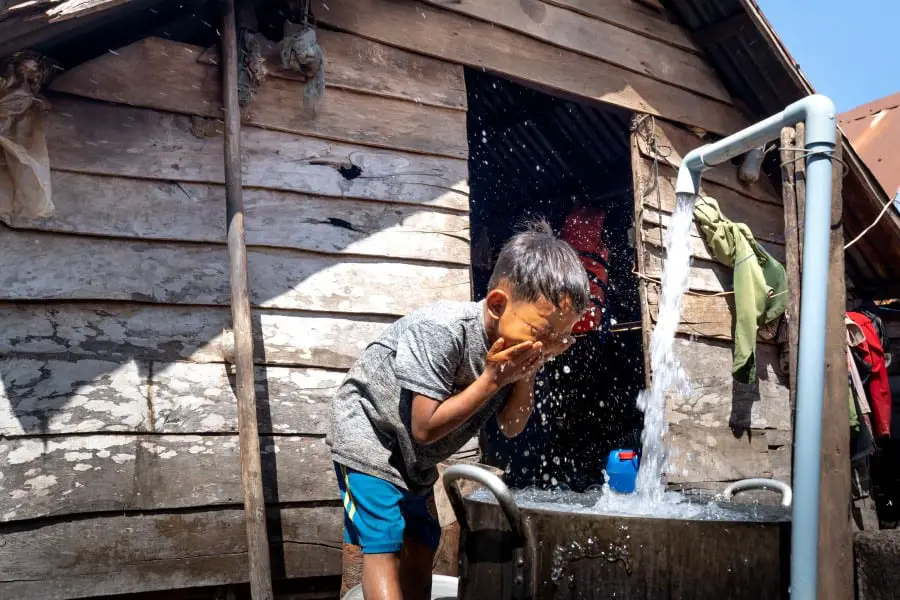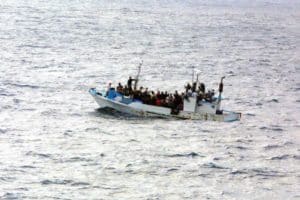This page contains affiliate links. This means if you a follow a link and make a purchase, at no additional cost to you, Humanitarian Careers will receive a commission. Thank you for supporting the site.
Many people looking into international development issues will soon come across the term sustainable development. In 2015, the United Nations even replaced it’s Millennial Development Goals with the Sustainable Development Goals. Sustainable development is defined as development that meets the immediate needs of people without compromising the needs of future generations…
But if sustainable development is so hyped, why, when you look at most development projects, are they far from sustainable? Could it be that sustainable development isn’t actually possible?
Sustainable Development Is Possible, Here’s Why
Sustainable development is possible. However, it requires significant planning, resources and global commitment to become truly viable. Major shifts in how international assistance is given are needed to make sustainable development a reality.
There are several reasons why sustainable development is possible. The first is that there is clear real-world examples of sustainable development projects succeeding. Improved agricultural methods, solar powered schools, a shift away from coal-fired power stations towards wind farms and new railway lines across poorer countries are all examples of sustainable development.
A second reason why sustainable development is possible is because the world is increasingly realising that a new model for development is needed. Many development initiatives around the world failed to lift people out of poverty. On top of this, many have had a negative environmental impact. As the climate crisis becomes more evident, greater resources and dedication is being paid to sustainability. This is key to making sustainable development viable.
Lastly, a big reason why sustainable development is going to happen is because the communities that receive development assistance are now advocating for sustainable solutions. Climate breakdown is having a disproportionate effect in poorer countries. Sustainable development is possible because the people of developing nations are demanding it.
Challenges Preventing Sustainable Development
Ok, so we’ve discussed the reasons why sustainable development is achievable, but if sustainable development is possible why do so much development lack sustainability? Well, there are several reasons:
- Poor governance
- Instability
- Lack of financial and material resources
- Ill-conceived development projects
- Limited local buy-in
Let’s take a quick look at each of these…
Poor Governance
A first major challenge preventing sustainable development is poor governance.
For development projects to be sustainable they need to be ran well. They also need to have the support of a state that provide a degree of resources and is able to continue the projects sustainability. Without good governance, most development projects revert to being a drain on natural resources and lose their environmental sustainability.
Examples of how a lack of good government can prevent sustainable development can be seen in many infrastructure projects in low- and middle-income countries. These nations receive financial and material assistance to build roads, railways, airports, utilities and tele-communication networks. However, poor governance often means countries are unable to keep these infrastructure projects in good condition, or even still operating, once the external development assistance has ended.
Instability
A second reason why sustainable development may not always be possible is because of instability.
Development projects are ran in poorer countries and aim to improve the quality of life for people there. However, many poorer countries are also prone to instability. Development programmes often fail to remain sustainable because of economic of political instability, or because of conflict or armed violence.
Lack of Financial and Material Resources
Another reason why development is often not sustainable is because of a lack resources.
When sustainable development projects are set-up, they often receive significant financial support. This can come from international organisations such as the United Nations, World Bank, or European Union, from regional development banks such as the Asian Development Bank and African Development Bank, from other national government or from NGOs. However, after the initial injection of resources, it is often left to local government or organisation to continue the project running sustainably.
Many governments in poorer countries where development projects are ran, as well as organisations in these countries that may run development projects, often lack the financial and material resources to keep them sustainable. This is a major factor that prevent sustainable development.
Ill-Conceived Development Projects
One key reason why sustainable development is often not possible is because many sustainable development projects are ill-conceived.
Many sustainable developments projects are designed with good intentions. However, a lack of local knowledge, misunderstanding the context and limited local capacity can mean that development projects are poorly thought through. This is results in unsustainable development because essentially the project is doomed from the start.
Limited Local Buy-In
A final reason why development projects lack sustainability is because of they don’t receive local buy-in.
Too often development is done top-down. Government and international organisations decide that a development project should be constructed in a set location.
Too often, the local community is not consulted, or does not have enough input. This results in a lack of sustainability because the development work may not fully align with a community’s needs. A community may also resent the implementation of a development project that addresses a wider national need, or does not address their most pressing concerns. With a lack of local buy-in, sustainable development projects fail in the long-term because people lack investment in them.
International Development Online Courses
If you want to know more about sustainable development, we highly recommend the online short course Sustainable Development in the 21st Century by Yonsei University. Delivered by former UN Secretary General Ban-ki Moon, the online course would be a great addition to the CV of anyone interested in how countries can sustainably develop. The link is to the course’s page.
We also think the online course Management of International Development: Towards Agenda 2030 is great. It looks at the current international development model as well as the trends that will be key to global development in the near future, including sustainability. Follow the link to the course’s page for more information.
If you are interested in the practical methods used on international development programmes, we recommend the online course How To Design & Fund International Development NGO Projects. The course teaches students the tools needed to establish and run impactful development projects. Click the link to visit the course’s page for more information.
Why We Need To Make Sustainable Development Viable
As we’ve said, you’ll often hear the term sustainable development used, especially by international organisations such as the United Nations. But why is sustainable development so important? If we’re debating whether sustainable development is even possible, don’t we also need to think about why we even need it?
Sustainable development needs to be made viable because it is a key to preventing further climate breakdown. It is also a vital route for poorer countries to escape poverty. People living in destitution require long-term and lasting solutions to improve their lives. They also require development solutions that do not further exasperate the climate crisis and, in-turn, increase environmental factors that keep many nations poor. This is why sustainable development must be made possible.
As well as ensuring people are lifted out of poverty without harming the environment, another reason why we need to make sustainable development possible is to help poor countries adjust to the changing climate.
Low- and middle-income countries are less able to withstand climate breakdown. Sustainable development needs to be viable firstly because it will increase the resilience of poorer nations through increased development. Secondly, a key tenant of sustainable development projects is that they themselves can withstand changes in the environment.
How Can We Can Make Sustainable Development Possible?
In order to understand if sustainable development actually is possible, a final question we need to ask is how can we make it so? We know that it is possible to implement development projects that have a long-term positive impact on the environment; we also know the challenges sustainable development faces. But, how can we ensure that more development assistance is truly sustainable? Well, there are four main things we need to do:
- Improve governance in poorer countries
- Improve community engagement
- Address instability in developing countries
- Better funding for development works
Now we’ll go over these in-turn…
Improve Governance In Poorer Countries
A major factor that needs to be addressed if we are to have widespread sustainable development is an improvement of governance in many countries that receive development assistance.
Although addressing governance issues is notoriously difficult, it is required in order to make sustainable development truly viable.
Issues such as corruption, property rights, civil rights and the rule of law all need to be addressed if a country is to sustainably development. International efforts to improve governance in these areas needs to be strengthened for sustainble development to be possible.
Improve Community Engagement
A second way that we can make sustainable development possible is by improving community engagement in development projects.
Development assistance is designed to improve the lives of people living in poverty. In order for it be sustainable, the community it aims to serve must have their voices heard about the type of assistance they need and the impact it can have on the local environment. Essentially, if the people who the project is aimed for aren’t fully consulted, they simply won’t engage with it to the fullest extent and assist with its sustainability. Addressing issues around community engagement in development is a key way we can make it sustainable.
Address Instability In Developing Countries
Another way we can make sustainable development viable is by addressing instability in poorer countries.
As we’ve discussed, many developing countries face chronic instability. They also lack the resilience to withstand shocks. There are many ways that development actors can address instability in poorer parts of the world. These can include tackling climate change, resolving armed conflicts, addressing refugee and migration issues and improving governance. Addressing factors such as these would make poorer countries more stable, and in-turn, make development projects more sustainable.
Better Funding For Development Work
A final way to make sustainable development possible is by better funding development projects.
All the above challenges facing sustainable development can be resolved. However, it’s going to cost money. Although billions of dollars is given in development assistance each year, if we are going to have truly sustainable development, then the root causes preventing it must be addressed. There is no getting way from the fact that doing this will cost financially. Increasing the funding given to poorer countries to help address the changing climate is one of the key factors in making sustainable development possible.





